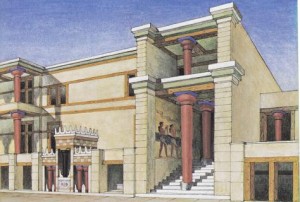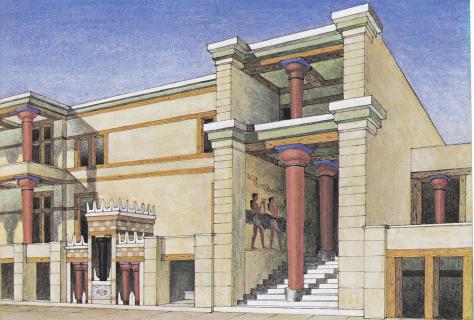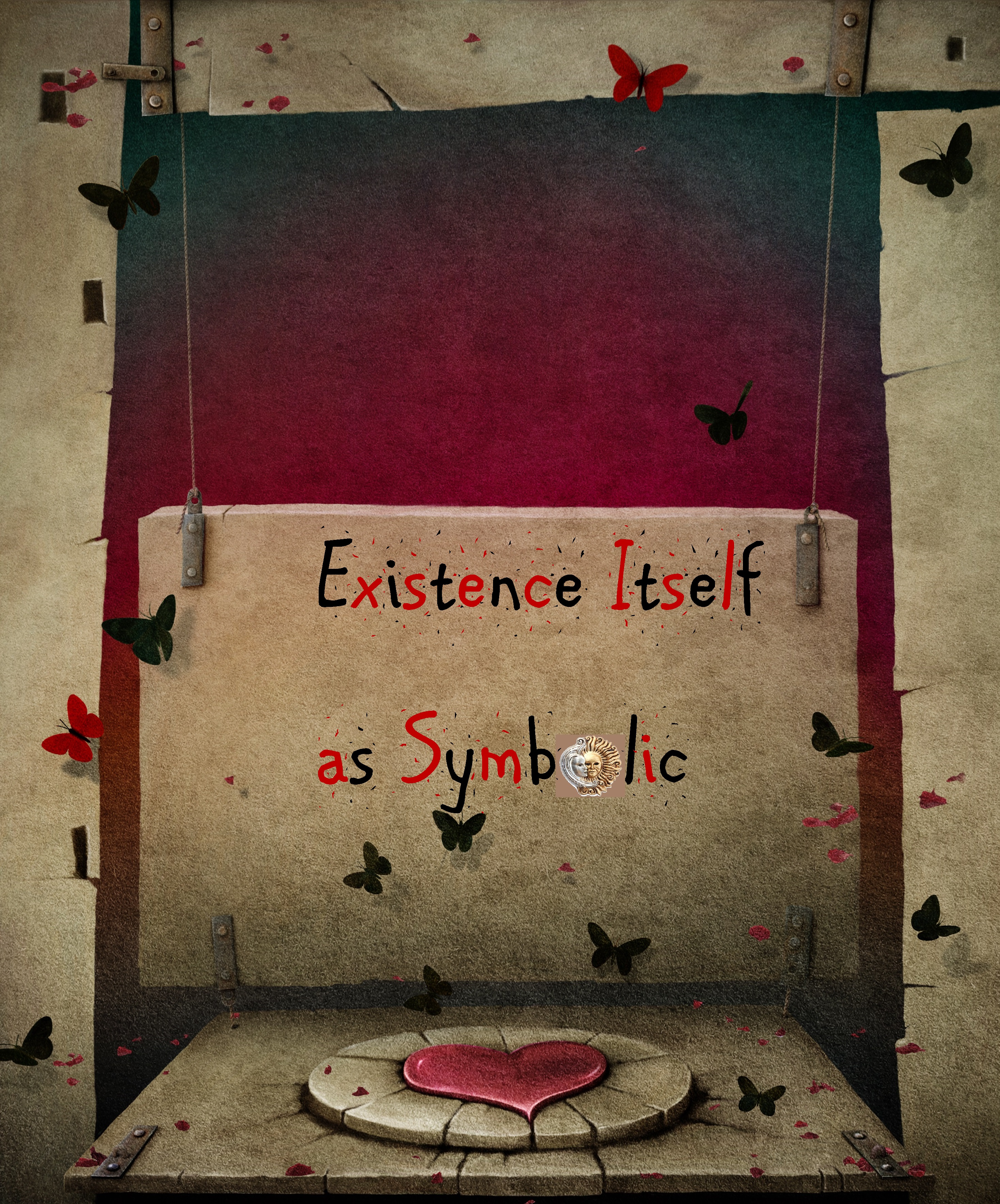
Nowadays, we like to commend ourselves for the technological and scientific ambiance of the twenty-first century. The evolution of interactive applications such as iPhones, iPads, HTC androids, and social networking systems such as Facebook, Twitter and MySpace, have shortened distances and shrunk our world considerably. They’ve also contributed to some less favorable consequences, namely the turning inward of attention which has stunted social interaction and to a greater extent, disconnection from the natural cycles of the planet and the larger cosmos. The aforementioned feats, if you wish to call them that, have been made possible through the fiercely resistant patriarchal mentality of the Iron Age, the greater will to achieve transcendence through the subjugation of Nature irrespective of whether or not the enterprise draws to itself the loss of life. Foremost of this movement were the Mycenaean Greeks whose endless pursuits of power were epitomized in Homer’s Iliad and Odyssey and continued by Virgil in the Aeneid.
This masculine aesthetic domination of nature deemed noble, heroic and glorious garnered expression in the formation of communities that were underpinned by compartmentalization, by the induction of hierarchy and conventional marriage. Given that the masculine or yang-consciousness has always been connected with territoriality and activity and hence with the fiery energy of the sun, it makes sense that the early patriarchal cultures would have adopted a calendrical system with the solar satellite as prevailing mediator. The fundamental aim of this civil calendar was to order the government administration according to the diurnal or daytime hours of the twenty-four hour cycle. Its induction was something of a retrograde step in all respects, for it jettisoned the lunar and stellar cycles which had mediated the religious and spiritual affairs of our ancient ancestors and consequently disconnected us from the celestial movements and events which stood as great markers on a wheel of time that was both measureable and eternal.
When the all-powerful priests of Heliopolis introduced the solar-based civil calendar into Upper Egypt during the first quarter of the third millennium BC, the lunar chronometer was retained as the mediator of religious and spiritual events. The Greeks, whom frequented Egyptian shores, followed in their stead and devised the administration of their own city states with a similar calendar. But it was merely a case of prolonging an indelible and inevitable death, for when the Romans supplanted the old calendrical systems with the Julian one in 45bce, the likes of the tropical or solar year was given comprehensive presence. Hence the moon and stars, demoted by the Heliopolitan priests as secondary regulators of the wheel of time, soon found themselves at the very bottom of the cosmic totem pole, imprisoned within the dithering shades of human memory.
Foremost of these memories was lunar nutation, a vacillating motion in the moon’s axial rotation that causes a continual shift in the position of ascension along the horizon and culminates with a return to its point of origin every 18.6 years. An even more significant and dramatic astronomical phenomenon that was temporally lost recurs every nineteen years and involves the harmonious alignment of the sun and moon. Known as the Metonic cycle, the nineteen tropical (solar) years or two-hundred and thirty-five synodic (lunar) months it takes for the lunar phases to begin to unravel on the same days of the same months of each year again would have no doubt impressed the Minoan astronomer-priestesses and priests. This ever-present and eternal cycle which repeated at thirty-eight, fifty-seven, seventy-six years and so forth would have been perceived as a Sacred Marriage, a Hieros Gamos between the lunar and solar energies and consequently a renewal of truth and order in what at times would have probably appeared to be a chaotic and nonsensical universe.
I suppose the contemporary ability to track the habitual motions of the celestial spheres through computerized telescopes has drastically simplified what would have otherwise been an overtly intricate and painstaking task. Impressive as they are, these sophisticated technologies have appeared quite late in our evolutionary history, and so we would probably come up short should we dare to weigh ourselves up against the astronomical acuteness of any primitive matriarchy. In no way can the magnanimity of their achievement be diminished, especially when their observations would have been precariously hinged and entirely dependent upon the accuracy of the naked eye, painstaking repetition of the latter and the convenience of some very simple writing and recording implements. In fact, the scope and depth of their visual acuity, perceptions and conscious aspiration was such that it allowed them to descry a cosmic phenomenon known as axial precession, or precession of the equinoxes.
The sweeping, numinous and all-encompassing cosmic cycle is caused by a slight wobble in the Earth’s axial rotation, causing the terrestrial pole to trace out a cyclical path around the ecliptic. Changes in the earth’s orbital parameters gradually shift the vernal point (21st-22nd March) in the reverse direction of the sun’s annual pilgrimage through each of the twelve zodiacal signs, giving the allusion that the belt of the ecliptic is slowly being torqued in a clockwise direction. The vernal point moves about one degree every seventy-two years, and it takes about 26,000 years for it to traverse the full 360 degree revolution mapped out by the twelve zodiacal constellations. Hence, each constellation occupies the vernal point for a period of about 2160 years before forfeiting its position to the next.
We are currently in the Piscean Age, a period marked and colored by the sacrificial consciousness of Jesus Christ. This particular Age began around 60bce, a time when pharaonic Egypt and classical Greece were nearing the end of their tether and imperial Rome was on the ascendency. It appears that the proactive, fiery and restless yang energy which defined masculine aesthetic consciousness found full expression in the Arian Age (2220bce–60bce). Save for being an extremely productive time in the cultivation of the arts and sciences, it was this Age that saw the ram-headed gods of the patriarchal solar cults rise to prominence and incarnate through the Amenhoteps and Ramsesses, Thutmose III, Alexander the Great and Julius Caesar. If we were to push further back into the dark and misty recesses of history we run into the Taurian Age (4380bce–2220bce).
Had the astronomer-priestesses of Cnossos looked towards the predawn skies of the winter solstice at the inception of this Age, they would have noted that the stream of celestial waters above them resembled an outstretched female figure with the tips of her extremities touching the east and west horizon. In time, they would have observed that the solar orb emerged from the area around her pudendum in the manner of a child being born from its mother only to sink back into the oblivion of darkness at the end of its diurnal journey through the area around the mouth. Curiously the woman’s pudendum would have also marked the bucranium of Taurus, with its horns extending westward towards Aries. Seeing that the sun rose continuously in that constellation, the priestesses would have probably attributed an entirely bovine nature to the male consort of the goddess. Alternatively, the shape of the woman’s mouth would have imitated the double blades of an axe, giving the allusion that the solar bull-god was being hacked to death at dusk.
An observer, any observer, standing beneath the cupola of the predawn skies around 4380bce in Cnossos would have witnessed the Great Mother Goddess and the sacrificial state of her son-lover, the youthful bull-god, reflected in the pattern of the stars above; a wholly celestial representation of emotionally coloured archetypal symbols deemed sacrosanct to Minoan cosmology. The wider point being made here is that the stars give voice to the inner archetype at work as it draws its psychic contents onto the sky like a connect-the-dot puzzle whilst simultaneously giving a rough estimate of when it may have entered the sphere of history. And in speaking through the sound language of mathematics the stars openly defy archaeological establishment by estimating a time much older than the accepted convention. According to the Eternal Ones, the foundation of the Minoan empire and the inauguration of the cult of the mother goddess and her bull-god consort occurred in 4380bce, roughly seven or eight centuries before the foundation date (the Prepalatial Period) proposed by Sir Arthur Evans.
Now a great many historians and scientists who adhere to the conventional chronology which has defined all perception over the last few centuries would scoff at such an inference. They would allude to the fact that knowledge of axial precession, or precession of the equinoxes, didn’t enter our collective consciousness until Hipparchus of Rhodes or Nicaea (190-120bce) juxtaposed the sidereal and tropical years in the second century bce. But for anyone able to think outside of the square, it makes no sense at all that the ancient stargazers would have been ignorant of this great cosmic cycle seeing that they had been making millennia-long use of the stars to orientate themselves and navigate the far-ranging seas of the planet. While practicable devices to measure cycles of precession where constructed, they were extremely scarce because the level of skill needed to realize such elaborate craftsmanship was possessed only by a select few. Most of these gadgets would have been pioneered during the Iron Age, a time when the creative impetus of the human mind was working miracles in cities like Athens and Alexandria and adding tiers of meaning to our communal existence. The most significant examples that have since come to light definitely date to this period. They include the Antikythera Mechanism, the Gaulish Coligny Calendar, and the circular zodiac on the ceiling of the Osirian chapel at the Denderah Hathor temple in Egypt, all of which demonstrate a sophisticated understanding of lunisolar cycles and axial precession.
The last of these, the Denderah zodiac, is especially important to our study. In this ancient planisphere, the precessional cycle, the thirty-six ten-day periods of the year known as decans, the signs of the zodiac and the constellations depicted in the sculpture all unite under the aegis of old and more contemporary Egyptian, Babylonian and Hellenistic mythological and religious imagery. The result is to proclaim a philosophical understanding of the ancient past as implicitly otherworldly, metaphysical and celestial; not earthly and historical, as the Jewish and Christian monotheistic traditions later assumed. One of the very first advocates of the former, one of the first to vouch for a history measured by the fixed zodiacal ages that characterised axial precession was Rene Adolphe Schwaller de Lubicz (1887-1961ce). After examining the relic, Lubicz concluded that a primary intent of the Denderah priests of late antiquity was to mark up three important dates, the first being the inception of the Age of Taurus in 4380bce.
Six and a half millennia ago the heliacal rising of Sirius, or her fleeting appearance in the predawn skies after a seventy day absence, would have coincided with summer solstice in Crete and Egypt as well as with the Nile Inundation in the latter. It was a time when the sun’s rays became scorching hot, tributaries became torrents and Mother Nature was at the height of her generative powers. Sirius’s inexplicable connection to and regulation of the agricultural cycle was deemed so important that the Minoan astronomer-priestesses inaugurated her into their first calendrical system to mark the inception of the Cretan New Year on about the 6th July. Given that Sirius was given prominence in the heavenly order, it’s no surprise that the earliest temple-palaces in Cnossos, Phaestos and other Minoan settlements were orientated towards this star, allowing its supernal light to illuminate their inner chambers on a date which marked the renewal of the annual solar circuit. In 4380bce, Sirius would have risen in conjunction with the sun beneath Cancer’s stead, which is why it appears aligned to Cancer on the North-South axis of the Denderah zodiac. As Sirius was inexplicably associated with the regenerative powers of the mother goddess, the Denderah chronometer serves as a potent reminder of the birth of the Minoan empire under her all-omniscient eye and the subordination of its people to her divine will.









